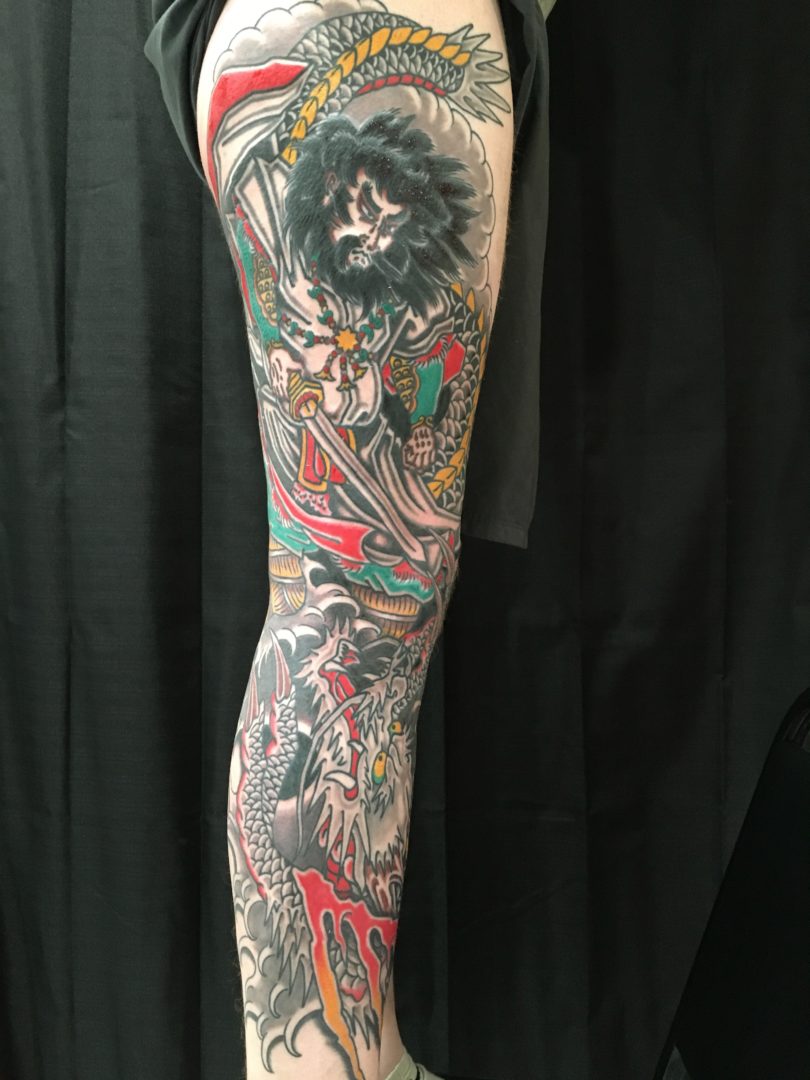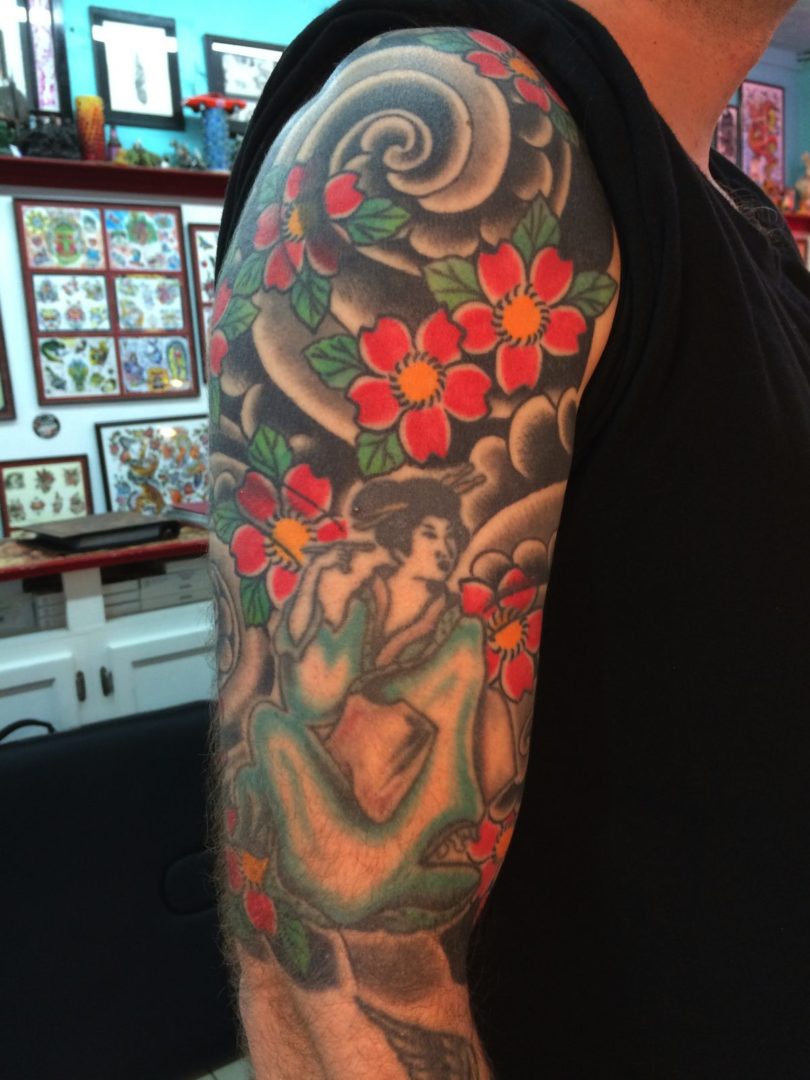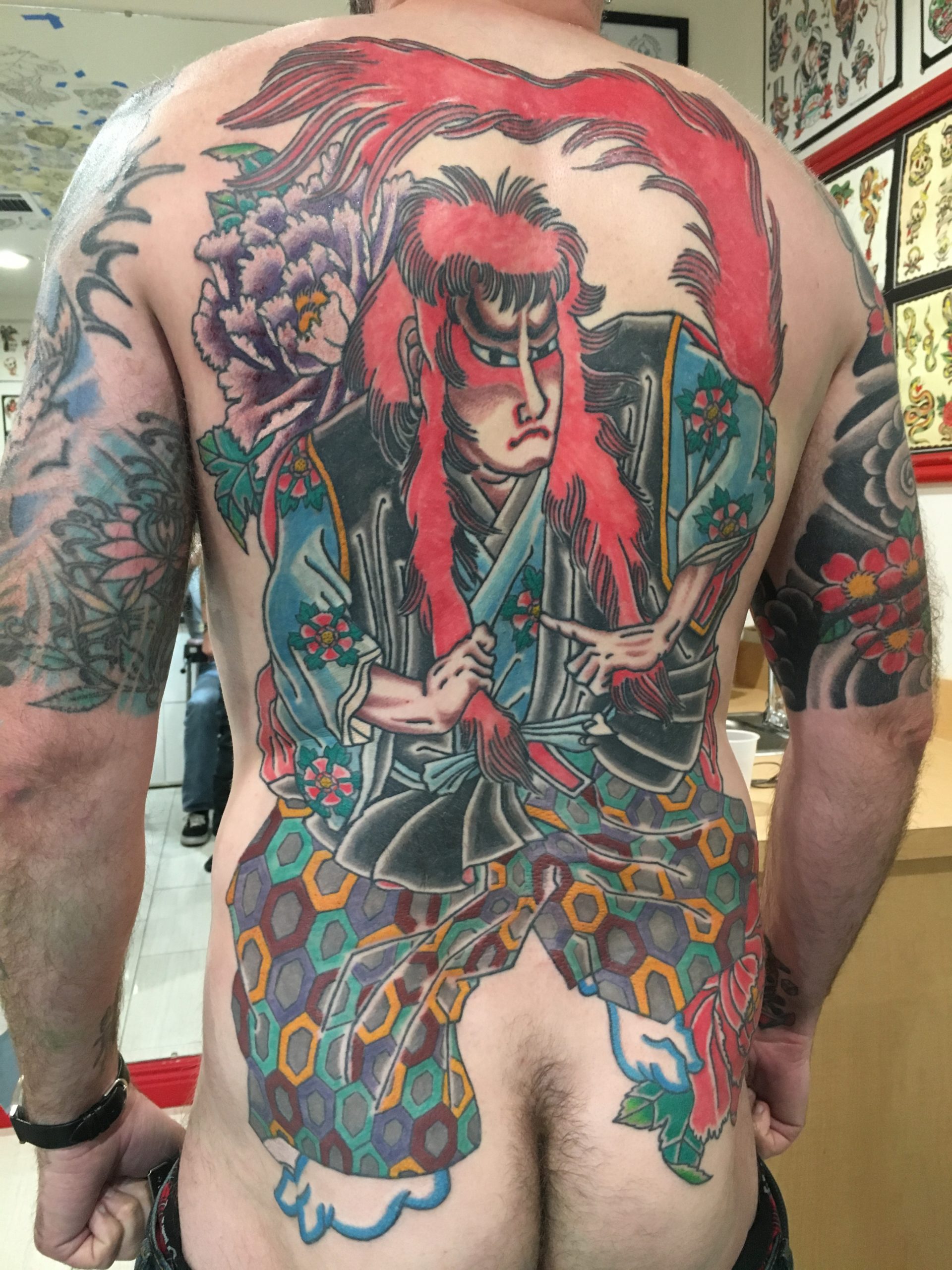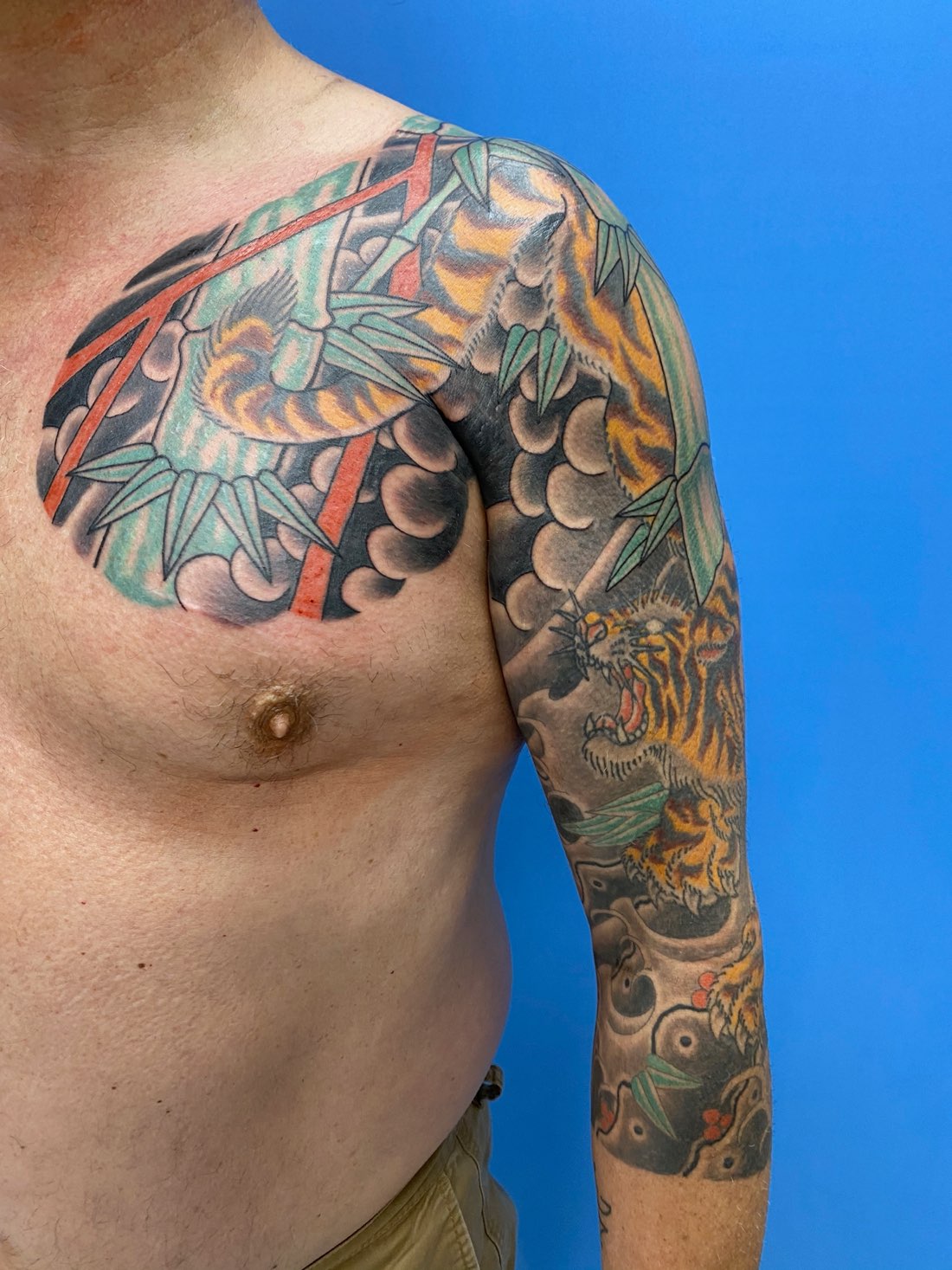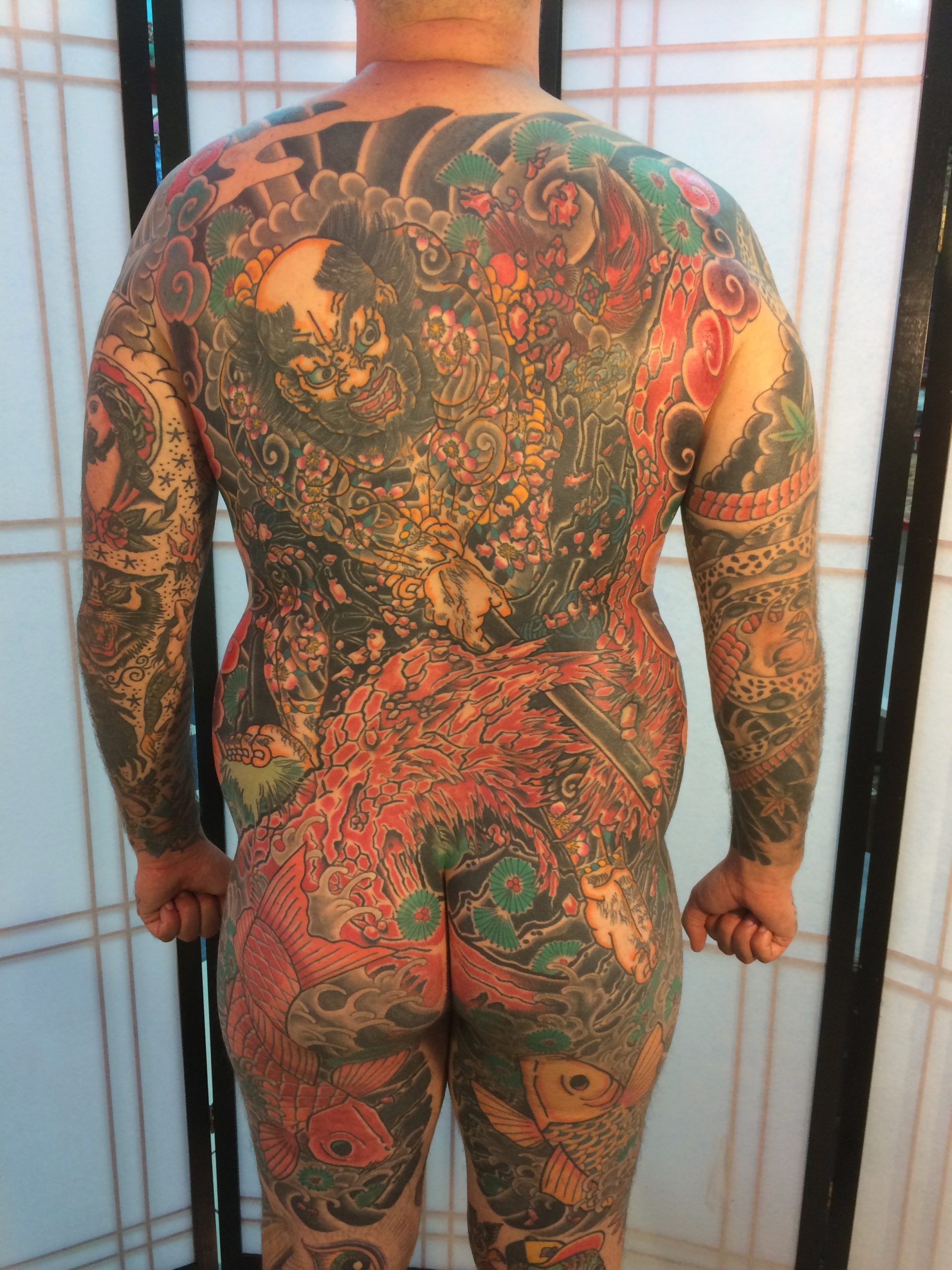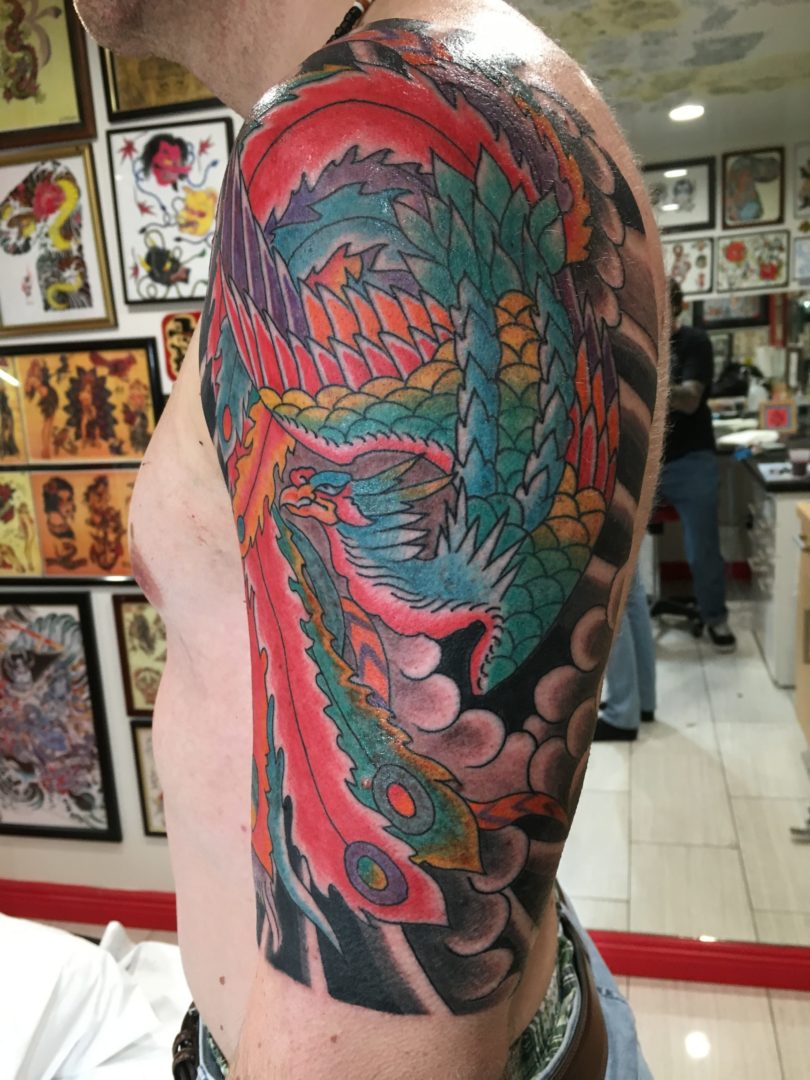There is an inherent balance in the work. Each image is offset and complemented by another. Each colorful tattoo design is backed up with a setting of rich blacks and greys using the incomparable sumi ink of Japan. The elements of nature figure heavily in the work. Flowers fall behind scenes of sometimes violent action. The wind blows strongly behind each picture.
The back is the main canvas for this extreme artform. The Japanese back tattoo extends down the buttocks, and down to the middle of the thigh. This is the anchor of the Japanese bodysuit, as well as its culmination and zenith. The sleeves flow forward from this center. The chest panels flow forth, and spill down the ribs and stomach. The leg sleeve finishes off the Japanese bodysuit, or “horimono”.
The placement of images is very important and is an art all in itself. The format of the horimono is highly specific, exact. The practice of learning the way all these body parts connect in the Japanese tattoo is a large part of the journey towards becoming a Japanese tattoo master.
The pairings of images are either right or wrong. They are black and white. An artist who understands these pairings will never fail to pair correctly. Ignorance of the pairings will always result in work that does not make sense, work that is visual gibberish.
These are just a few of the very important aspects of the Japanese traditional tattoo that the artist must understand. A good deal of knowledge is required to work in this prestigious style. Some of the history, culture, and social customs of Japan must be known. The artwork of Japan’s different eras is another area of study the tattooist must have undertaken. The way those arts inform the Japanese tattoo image canon is extremely important.
Finally, there is the question of the unique artform of the Japanese tattoo itself. The images and rendering that are featured, the setting of each imagen, the stories, myths and legends of Japan and how they are portrayed all matter. These stories, from one little island set off to itself in the far, far East, can have such universal impact, meaning, and sentiment. As a traditional Japanese tattoo artist, the sentiment behind the entire tattoo process is what makes the art form unique.
Some Dallas tattoo artists have become highly enamored of the Japanese culture, Japanese art, and, ultimately, the Japanese art tattoo. It is a high point in the world of tattoo, very detailed, prolific, and staggering in size and proportion.
The tattooist is drawn to this style almost without exception. It could be said that the Japanese tattoo is the most highly evolved, the most pointedly refined tattoo work in the world.


